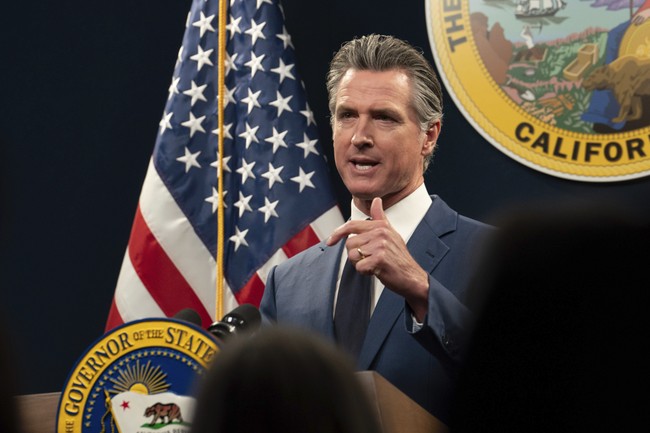Modi's Ambitious Post-Poll Industrial Reforms
Prime Minister Narendra Modi's potential third term agenda includes propelling India to become a major global manufacturing hub, rivaling China.
Published June 04, 2024 - 00:06am

Image recovered from thehindubusinessline.com
As India awaits the result of the Lok Sabha elections, speculation mounts about Prime Minister Narendra Modi's next steps should he secure a third term. Reports suggest a comprehensive plan, aiming to overhaul the Indian manufacturing sector and position the nation as a powerhouse on the global stage. Modi's vision involves streamlining regulations to boost employment, offering substantial subsidies to domestic producers of semiconductors and electric vehicles, and reducing import taxes on crucial manufacturing inputs.
The anticipation of Modi's next term is met with both optimism for economic growth and criticism from those concerned about the labor and land acquisition reforms. Proponents argue that such policies could unleash India's manufacturing potential, raising its global share and creating much-needed jobs, while critics fear dilution of labor protections and the challenges faced by farmers and landholders.
Particularly ambitious is the comparisons to China's Pearl River Delta, as Modi has shown interest in special economic zones modeled after China's success. The establishment of the Dholera Special Investment Region highlights efforts to attract manufacturing firms with long-term leases and easier access to industrial land. However, India's approach to tariffs and supply chain management remains distinct from China's, raising questions about the efficiency and viability of these ambitious plans.
This move comes at a critical time for India, currently the world's fastest-growing major economy, yet struggling to provide sufficient jobs within older economic sectors. The juxtaposition of a booming tech industry and a lagging traditional manufacturing base has driven Modi's push towards significant economic reforms.
As Modi's Bharatiya Janata Party anticipates a victorious election outcome, the world watches to see if India can realize its manufacturing dreams and if these reforms will indeed deliver the economic development and job creation that many are hopeful for.
Amidst the charged anticipation, experts are looking closely at Narendra Modi's economic strategy. His previous terms have been marked by bold moves such as the Goods and Services Tax (GST) and the Make in India initiative aimed at transforming India into a global manufacturing hub. Modi's government has also prioritized digital infrastructure, actively promoting the 'Digital India' initiative to integrate government departments and the people of India.
The emphasis on revitalizing manufacturing is imperative as India confronts its employment challenge. With a significant young population, job creation is crucial for maintaining social stability and economic momentum. Modi has pledged to create millions of jobs for India's youth by focusing on labor-intensive industries and ensuring a business-friendly environment that eradicates unnecessary bureaucratic red tape.
India's strategic location as a link between the Middle East and Southeast Asia signifies its potential as a global manufacturing and supply chain hub. Investment in infrastructure, including the Sagarmala project aimed at port modernization and new industrial corridors, is expected to significantly reduce logistic costs, making Indian manufacturing more competitive internationally.
Environmental concerns are also being taken into consideration, with Modi's administration proposing policies to promote sustainable manufacturing practices. Investments in renewable energy and a push for electric vehicles are seen as moves to anticipate the global shift towards environmental consciousness in production and consumption.
Yet, attaining the manufacturing dream requires more than policy changes. It needs comprehensive skill development programs to prepare a workforce capable of supporting sophisticated manufacturing sectors. Modi's government has recognized this with the initiation of the Skill India campaign, aiming to train over 400 million Indians in different skills by 2022.
Furthermore, trade relationships will play a pivotal role in shaping India's manufacturing landscape. The country has been negotiating free trade agreements (FTAs) with various nations and blocks, seeking to gain better market access for its industries. Modi's diplomatic efforts to strengthen ties with countries such as Japan, South Korea, and the United States could augment avenues for technological and investment partnerships.
With the imminent election results, the Bharatiya Janata Party's (BJP) political capital and ability to mandate seminal changes will be key in pursuing these reforms. The party's emphasis on self-reliance or 'Atmanirbhar Bharat' has been a cornerstone of its manifesto, seeking to reduce dependence on imports and bolster domestic industry.
Nonetheless, the success of these initiatives will depend on the execution. There are substantial hurdles such as land acquisition laws, rigid labor laws, and the need for a robust financial system to support industrial growth. Critics also argue that the Quality of life and equitable growth should not be compromised in the pursuit of industrialization.
The Modi administration's capability to balance critical issues like rural distress, income inequality, and urbanization, while catalyzing economic growth, will likely determine the trajectory of India's economic and social development.
As the world's largest democracy awaits the results of the Lok Sabha elections, the global community remains attentive. Narendra Modi's potential third term presents opportunities not only for India's ascent as a manufacturing behemoth but also for the broader geopolitical economics of the region. India's strive for a self-sufficient and dynamic manufacturing sector is not only about enhancing its economic stature but also about uplifting the lives of its billion-plus citizens.






